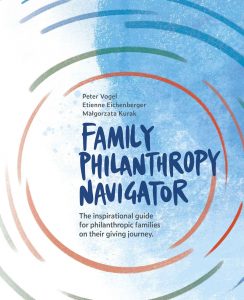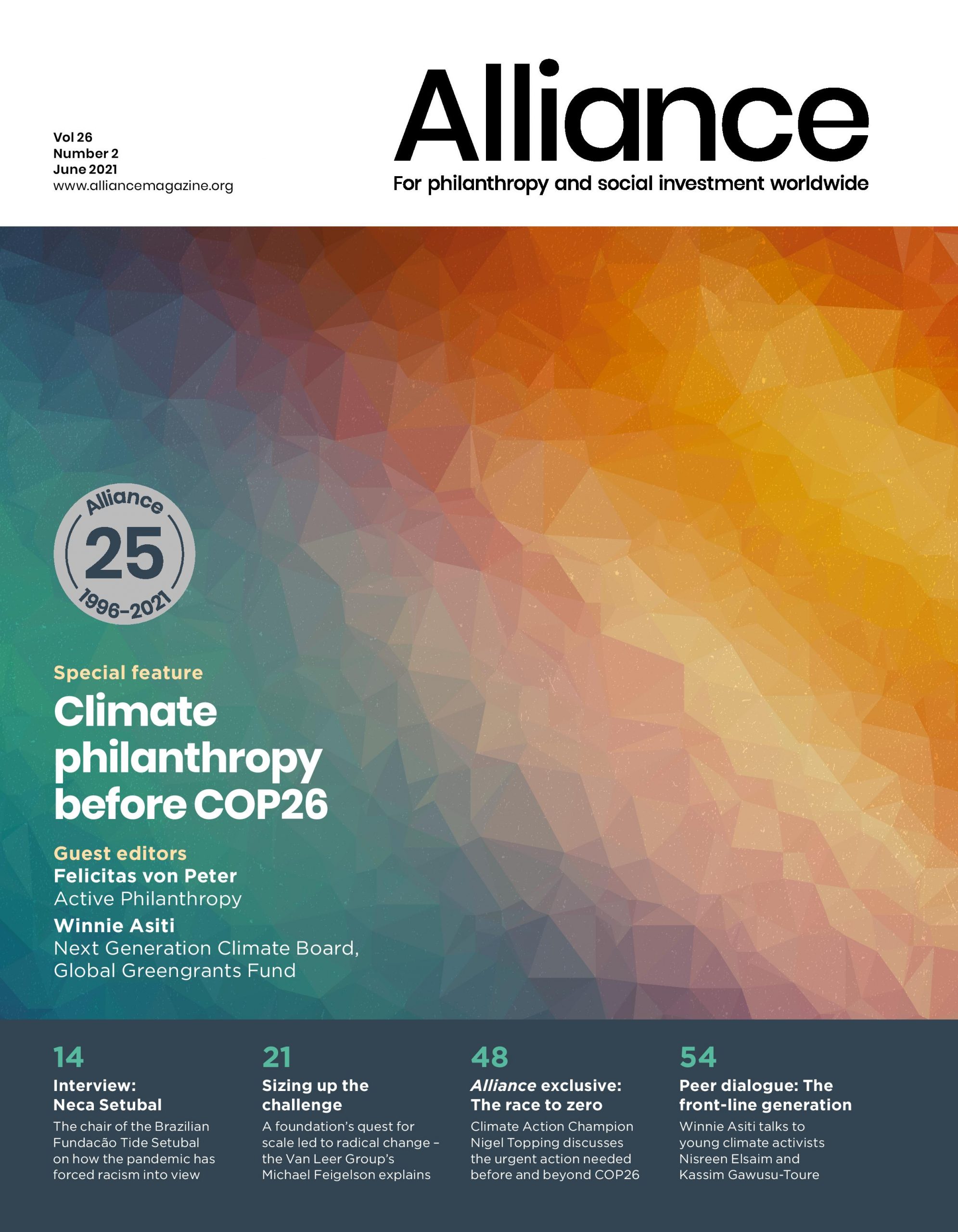Reviewed by Filiz Bikmen, Founding director, Esas Sosyal.
Remember how it feels to be in a room with a number of small tables, flipcharts, colourful post-its and lively drawings of the participants’ discussions captured on huge posters? The Covid-19 pandemic has brought such opportunities to a complete halt. Yet this guide might be the next best thing. It simulates the feeling of an interactive workshop with knowledgeable instructors, diverse participants and a talented graphic artist capturing engaging discussions.
 Family Philanthropy Navigator is for those who find practice, not theory, inspirational. Structured in three sections, ‘Purpose, Relationships and Organisation’, it weaves together three authors’ extensive knowledge and practice with experiences of select families captured in interviews. Just over 200 pages, the guide has activities, insights and case studies throughout. It is, in effect, a ‘workshop-in-a-book’, and similar in style to ‘learning organisation’ guru Peter Senge’s classic Fifth Discipline Fieldbook.
Family Philanthropy Navigator is for those who find practice, not theory, inspirational. Structured in three sections, ‘Purpose, Relationships and Organisation’, it weaves together three authors’ extensive knowledge and practice with experiences of select families captured in interviews. Just over 200 pages, the guide has activities, insights and case studies throughout. It is, in effect, a ‘workshop-in-a-book’, and similar in style to ‘learning organisation’ guru Peter Senge’s classic Fifth Discipline Fieldbook.
Structure and design are paramount. The text is conversational and easy to follow for a philanthropic family member or a seasoned philanthropy adviser/foundation professional, but because of its highly technical nature, may be more useful for the latter. There is a wealth of insight that will help guide the intricate journey of family philanthropy. This explains its particular appeal to me, as it should be referenced frequently when working with clients – albeit with some caution.
Some may, for instance, feel intimidated by the details and options put forward and it’s important to recognise that some clients (or fellow family members) may not be ready for a download of charts plotting ‘trade offs’ – a term the authors use to describe the myriad decisions to be made. Continuums are useful in nudging people toward making decisions, yet the X often lands somewhere in the middle. Hybrid models – combining funding and operating programmes, grants and investments, solo initiatives and collaborative efforts etc – are gaining more traction and are felt to have greater impact. While the authors reassure readers there is no right or wrong, the prominent visual effect of an ‘either-or’ continuum gives an impression that the middle ground may be less desirable.
The framing of ‘journey’ also gave me pause. The authors use symbols and metaphors to stress the idea of navigation – maps, compasses, globes etc. It’s as if the voice of the text is whispering ‘if you don’t know or plan where you are going, you won’t get there’. While some agree and plan ahead, others are inclined to explore and let experience be their compass. Reading this guide reminded me that the tipping point is in creating space for active planning as well as experiential learning, as family members and clients will have different approaches to their journey – even if they are on the path together.
Ultimately, this guide is a valuable contribution and especially useful in bringing structure to emotive elements such as purpose, family and values and linking them to operational and strategic models. The publishing sponsor the Mauvernay family and Debiopharm Group are highly commended for making such an investment in developing the field of philanthropic practice.
About the book:
Authors: Peter Vogel, Etienne Eichenberger and Malgorzata Kurak
Published by: IMD
Price: £23.99 (paperback)
ISBN: 978-2-940485-31-4
To order: imd.org/family-philanthropy-navigator/book






Comments (0)